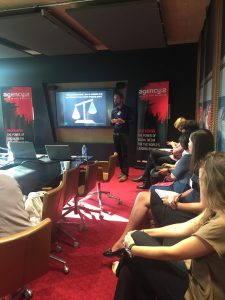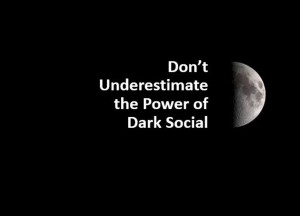Be a Leader in Social Media : A masterclass for #SMW
September 19, 2016
Leading in Social Media at Social Media Week London 2016
We were thrilled to host the ‘Be a Leader in Social Media’ masterclass as part of Social Media Week’s global event series on 16 September, at our offices in London.
This is the 3rd year we worked with Social Media Week London. Our event sold out quickly (!) and we welcomed senior marketers from a wide range of sectors and companies, including Virgin, Young’s Pub, Ella’s Kitchen & University of West London to our event.
This year we explored key themes important to social media marketers:
- Major trends in consumer engagement and their impact on social media marketing
- Tips for increasing ROI of social media campaigns such as tapping into the emotions and interests of your target market to improve targeting effectiveness
- Proving social media ROI to senior decision makers with our recommended attribution model
We were delighted to welcome Josh McBain (Head of Innovation, Future Foundation) who shared some key insights from DMA research report ‘The Future of Customer Engagement’.
Joel Davis, agency:2’s co-director, spoke next about applying the trends to make key decisions by:
- Connecting with consumers’ emotional side
- Hyper targeting though matrix segmentation
- Understanding audience motivations and drivers to purchase
- Engaging with the audience’s wider interests to spark a connection
- Reporting KPIs that matter most to the board
Our audience was very perceptive and asked many questions, which allowed for the sharing of many practical learning points.
We are already looking forward to next year. If you want to lean more about the discussion on the day, follow the conversation on Twitter using #SMWLeadSocial
The Power of Dark Social
September 1, 2016
What is Dark Social?
Dark social is any web traffic that results from unidentified sources (as first coined by Madrigal here) e.g. if you emailed an interesting link to your friend and he posted it to his social media profile vs. sharing it directly from the source you found the link on (former is dark social and latter is traditional social media sharing). You end up at a site but there is no referrer information as to how you got there; eventually, your visit is lumped into the category titled ‘direct traffic’ on analytics software.
Why is dark social on the rise?
“Younger audiences are increasingly using these more ‘private’ channels because of the amount of advertising on regular social media channels – and to avoid their parents’ prying eyes” (Catalyst Magazine 2016). It would seem that it is a way of sharing, without actually looking as though you are sharing. With the rise of offline conversations such as on WhatsApp, Facebook Messenger and Snapchat, it is ever more vital for brands to track these links to accurately report on ROI.
Why should digital marketers be aware of it?
The job of an analytics tool is to find out where visitors are coming from; however, there are obvious limitations if the sources are unidentifiable. This leads to difficulties in proving efficacy of social reach as showing high ROI is essential in securing budget for social advertising and social marketing plans; however, if 70% of social sharing is dark as research estimates, than efficacy becomes much more challenging to prove.
How should we deal with it?
It is a big challenge for brands and many promises to understand the complete user journey and channel mix that users go through but in practice there isn’t a specific answer. At agency:2 we believe marketers should continue asking the challenging questions around dark social and source out the best channels to gain high value conversions.
These are some examples of how brands have utilised dark social to their advantage:
Marketing Week highlights that O2 have run dark social campaigns which have enabled them to identify key insights into their customers. Moreover, they have been able to profile “audiences to see how the behaviour of people who share content is different to those who click on the shared content”. As a result, this strategy has helped improve their marketing campaigns and furthermore, fed into their content strategy too.
Adidas are also running a dark social campaign on WhatsApp, providing exclusive content to users in order to track personal conversations in their chats. As a result, Adidas have been able to optimise their strategy and consumer engagement. In setting up this campaign, it allows them to be perceived as a more personal brand communicating both offline and on WhatsApp. They will also be able to further develop the metrics to understand the full impact of dark social.
4 best practice tips towards gaining a foothold on dark social:
- Create a small test budget to explore if dark social works for your brand and audience.
- Be disciplined in use of trackable URLs e.g. Po.st links.
- Dig deeper into Google Analytics and don’t accept face value statistics.
- Be mindful that you are moving the conversation into a very personal space and adjust the message and frequency of posting accordingly.


